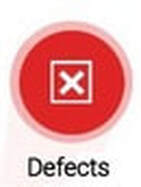8 Wastes of Lean Manufacturing - Who is TIM WOODS? |
|
One of the core principles in lean manufacturing is the removal of waste within an operation or process. How is waste defined? - Waste is any action or step in a process that does not add value to the customer. In other words, waste is any process that the customer does not want to pay for. Originally there were 7 wastes (Muda) defined by Taiichi Ohno, the Chief Engineer at Toyota, as part of the Toyota Production System (TPS). The seven wastes are Transportation, Inventory, Motion, Waiting, Overproduction, Overprocessing and Defects which are often referred to by the acronym ‘TIMWOOD’. This was expanded in the 1990's by adding Skills or non-utilized worker talent resulting in 'TIMWOODS'.
TRANSPORT
|
Unnecessary movement of parts, work-in-progress or finished goods. Excessive movement of parts, WIP or finished goods increases the risk of mechanical damage.
Countermeasures are to design the production process to be well balanced and not to have too much WIP. Smooth flow of parts through to finished goods. Avoid switching priorities where possible. |
INVENTORY
MOTION
|
Unnecessary movement of tools, equipment or people.
Countermeasures are to design workspaces to be more organized (5S) and ergonomic to reduce unnecessary movement. ‘Value-Stream-Mapping’ can be used to better understand the flow of material within the process and then to rearrange workplaces accordingly. |
WAITING
|
Wasted time waiting for other processes to complete causing idle machines/processes.
Countermeasures are to use 'Value-Stream-Mapping' to balance process to avoid or at least reduce delays between various stages. Use of standard operating procedures (SOP) to make processes more consistent to reduce variation in production time. Automate processes where possible. Consider smaller batches or 'One-Piece-Flow'. |
OVERPRODUCTION
|
Making more than the next process needs. This waste leads to having excessive inventory/WIP and is often used to mask underlying inefficiencies within the process such as long changeover times.
Countermeasures are to analyse the process to find reasons why it would be necessary to overproduce and work on reducing or ideally removing them. Match demand with production rate - Takt Time. Use pull system to control process - Kanban. Reduce changeover times to allow smaller batches to be processed - SMED. |
OVERPROCESSING
DEFECTS
|
Work that does meet the customer requirements and requires rework.
Countermeasures are to consider 'Design for Manufacture and Assembly (DFMA)' and to integrate 'Poka-Yoke' to reduce or ideally remove chance for error occurring. Automate process where possible. Standardise process by using Standard Operating Procedures (SOP). When defects do occur use '8D Methodology' to carry out root cause analysis. Sufficient staff training. |
SKILLS
|
Although this 8th waste was not a part of the original Toyota Production System (TPS) its effects are far reaching. Many companies are realising the importance of fully engaging with their staff in order to develop optimum processes. Regular meetings with machine operators are recommended to enable a method of obtaining valuable feedback that could be used to modify processes to achieve the best results.
|
|
Return to Home Page
|









